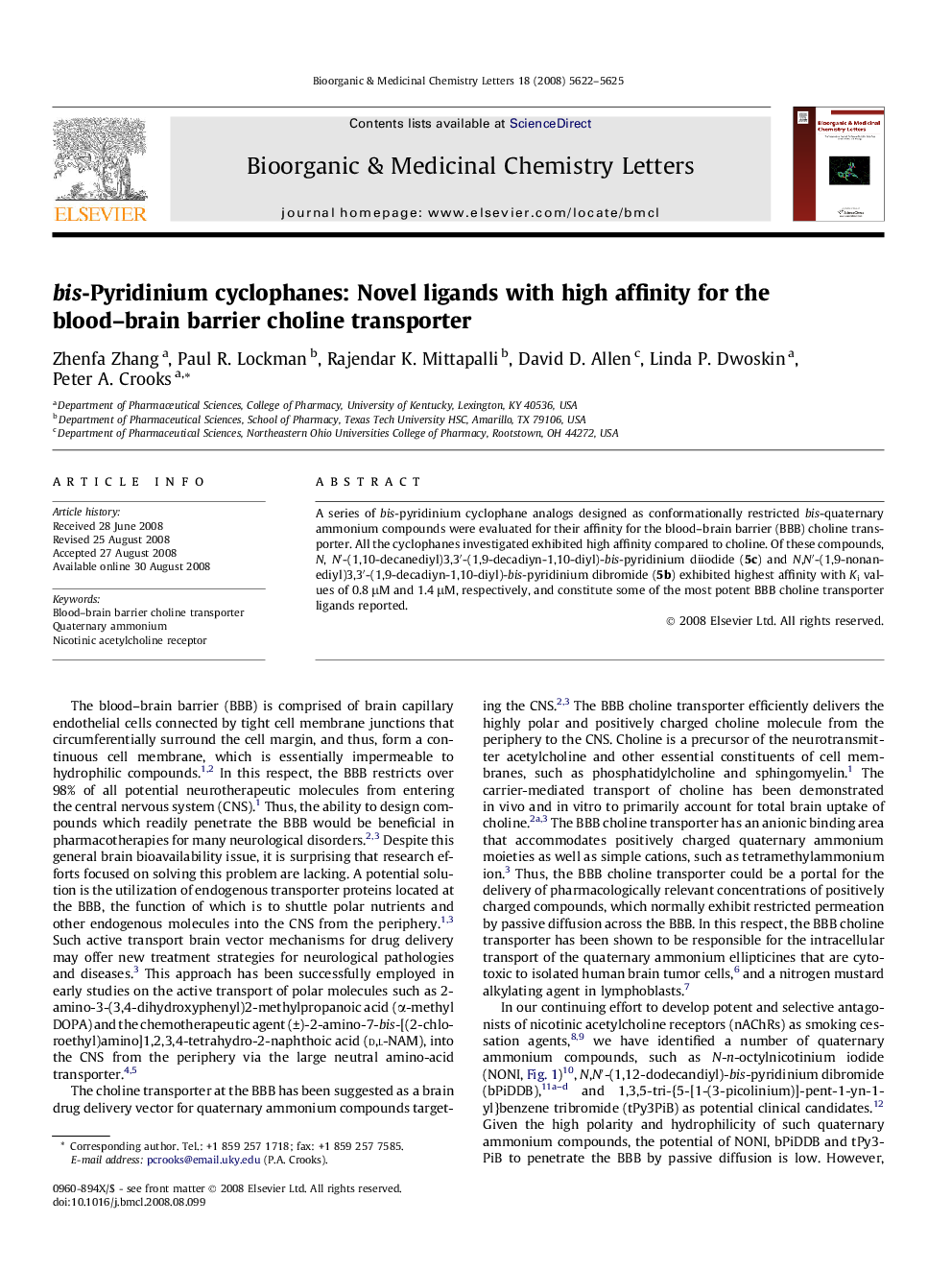| Article ID | Journal | Published Year | Pages | File Type |
|---|---|---|---|---|
| 1364794 | Bioorganic & Medicinal Chemistry Letters | 2008 | 4 Pages |
A series of bis-pyridinium cyclophane analogs designed as conformationally restricted bis-quaternary ammonium compounds were evaluated for their affinity for the blood–brain barrier (BBB) choline transporter. All the cyclophanes investigated exhibited high affinity compared to choline. Of these compounds, N, N′-(1,10-decanediyl)3,3′-(1,9-decadiyn-1,10-diyl)-bis-pyridinium diiodide (5c) and N,N′-(1,9-nonanediyl)3,3′-(1,9-decadiyn-1,10-diyl)-bis-pyridinium dibromide (5b) exhibited highest affinity with Ki values of 0.8 μM and 1.4 μM, respectively, and constitute some of the most potent BBB choline transporter ligands reported.
Graphical abstractbis-Pyridinium cyclophanes (5) designed as conformationally restricted bis-quaternary ammonium compounds exhibited high affinity for the blood–brain barrier choline transporter; 5c and 5b (Ki = 0.8 and 1.4 μM, respectively) represent two of the most potent blood–brain barrier choline transporter ligands known.Figure optionsDownload full-size imageDownload as PowerPoint slide
